August is another amazing month, where you can find plenty of wild food, herbs and mushrooms to forage for. If you are new to foraging, you’ll be pleasantly surprised that you can pick fruits that you’ll readily recognise from your local fruit market, such as blackberries, plums, cherries or apples.
What’s in season in August often overlaps with July and September, so make sure you check out my foraging resources for these months too.
So, next time when you go for a summer walk in the coutryside, make sure you pack few extra paper bags to gather your finds and don’t forget to pack a small pocket guide to help you identify everything you find on your stroll.
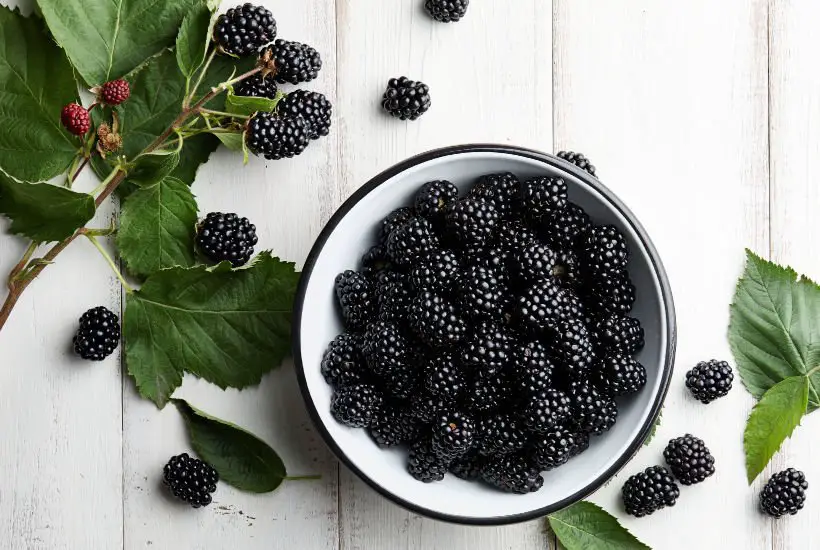
Sea Buckthorn
Sea buckthorn grows close to the sea in shrublands and hedges. You can also see it in town’s public spaces, parks or gardens as it’s often grown as a ornamental plant.
Another plant from this month’s picks that’s high in Vitamin C, sea buckthorn has about 10 times more Vitamin C than oranges.
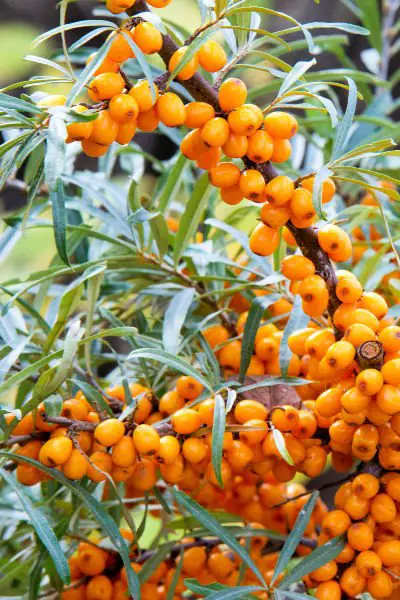
What to pick
- leaves
- fruit
notes
harvest time is anything between late august to late winter.
how to use
pick leaves in the spring to make tea
fruits can be made into syrups, confectionery, chutneys or jams.
Recipes
Elderberries
When the fragrant flowers of elder tree die down, the dark blue/black berries are formed. They taste completely different than the elderflowers, they are more like blackcurrants, blackberries and blueberries mixed together.
The berries are very high in Vitamin C, which makes them perfect for making syrups, jams and vine. Elderberry syrups would be traditionally used to calm down sore throat, cold or coughs.
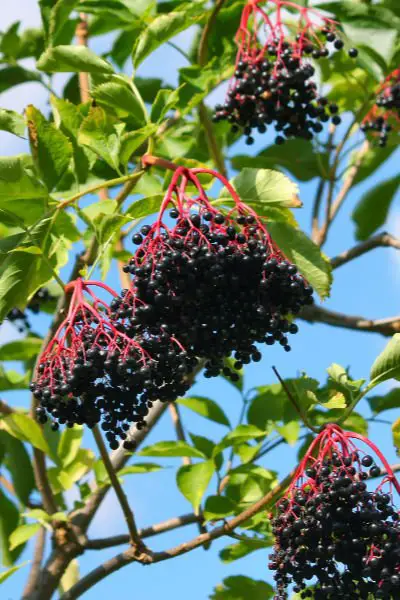
What to pick
- Pick whole clusters to take home, but then use only the berries for eating
notes
Harvest from august to september
how to use
Use elderberries in a similar way as blueberries or other small berries. Perfect for syrups, cordials, wine, baking or cooking.
Recipes
Mountain Ash – Rowan Berries
Mountain Ash (or Rowan tree) usually grows in mountains and on the banks of rivers, medowlands and you can also find them in parks and town gardens. Most of the tree is edible, but people mainly harvest berries which are high in Vitamin C.
It’s best to cook or process the berries and not to eat them raw. They are quite bitter to eat in the summer, but once frost has ‘bitten’ them, they soften and are much sweeter (the same as rosehips).
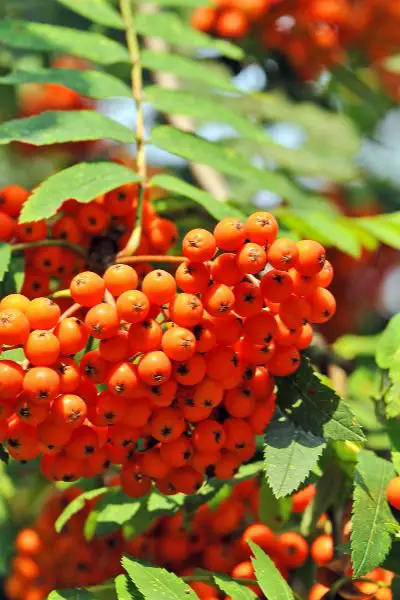
What to pick
- harvest whole bunches of berries, but use only individual berries to cook
notes
harvest from August to November
how to use
Only use cooked, baked or prepared with heat. Makes great jams, jellies, chutneys, syrups.
Recipes
READ MORE
Blackberries
Blackberries need no introduction! You would have come across their unruly bushes in the forest boundaries, hedges or the end of your garden.
They are pretty much everywhere and native to Britain. You can pick them and eat them as they are. Blackberries are fairly high in Vitamin C, which makes them perfect for helping to fight cold, flu or cough.
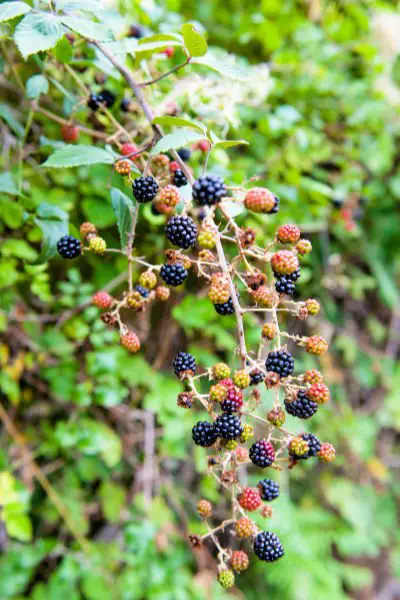
What to pick
- ripened fruit berries (black in colour)
- leaves for tea
notes
harvest from mid august to september
how to use
Eat blackberries fresh as a healthy snack or make them into jams, jellies, cordials or use them in baking or cooking.
Use leaves to make fresh tea or dry and then use in winter to make herbal tea
Recipes
wild mustard
The type of mustard relish you know from flavouring your food is made from commercially grown mustard, in particular the seeds of the mustard plant.
But there is nothing stopping us from using the wild mustard for the same purpose.
You can find wild mustard in the boarders of meadows, fields, domestic gardens, waste grounds, field hedges and shrublands.
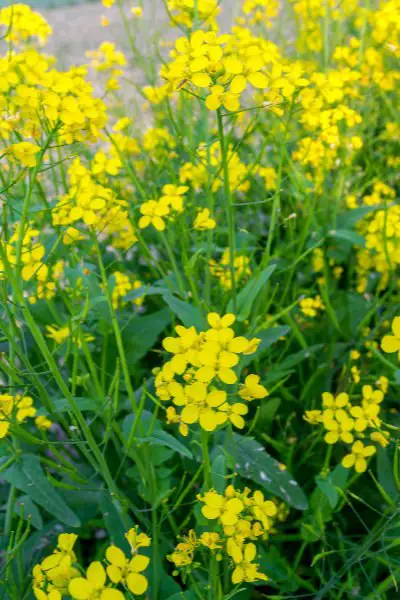
What to pick
- leaves
- flowers
- seeds
notes
harvest from March to August
how to use
- young leaves to add to salads
- mature leaves to cook as leafy vegetables
- fresh yellow flowers to add to salads
- seeds to dry and then prepare into homemade mustard or sprouted and mix into a salad
Recipes
Crab Apples
Crab apples are small, tart apples that are typically less than two inches in diameter. They are often found in the wild in woodlands, hedgerows, and along roadsides. Crab apples are also commonly grown as ornamental trees in gardens and parks. The entire plant, including the fruit, is edible, but the fruit is usually too tart to eat raw.
Crab apples are often used in cooking to make jellies, jams, and sauces, or as a flavoring for baked goods. They can also be used in herbal medicine to help with digestive issues, such as diarrhea and constipation. To harvest crab apples, pick the fruit when it is fully ripe, usually in late summer or early fall. The fruit can be picked by hand or by shaking the tree gently to release the fruit. When using crab apples in cooking, it is important to remove the seeds and core, as they contain small amounts of cyanide.
Wild Blueberries
Wild blueberries are small, low-growing shrubs that produce small, intensely flavored blueberries. They are native to North America and can be found in fields, forests, and mountainous areas. Wild blueberries are often smaller and more flavorful than cultivated blueberries. The entire plant, including the leaves and berries, is edible.
To harvest wild blueberries, pick the berries when they are ripe and plump, usually in late summer. When picking, be careful not to damage the plant or the surrounding area.
Wild blueberries can be used in a variety of ways, including in baked goods, jams, and smoothies. They are also high in antioxidants and can be used in herbal medicine to help with inflammation, urinary tract infections, and digestive issues.
However, it is important to note that wild blueberries should not be consumed in large quantities by individuals taking blood-thinning medication or with a history of kidney stones.
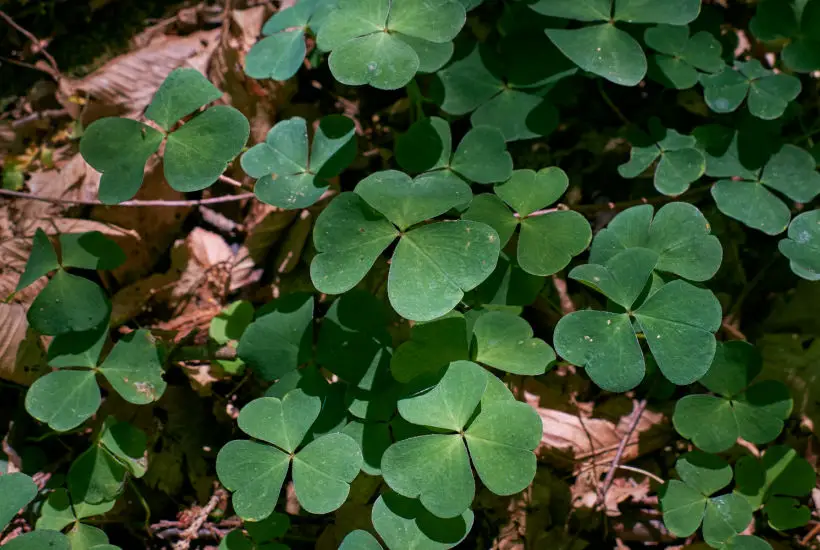
Wood sorrel
Wood sorrel is a wild edible plant that belongs to the Oxalis genus and is found throughout most of North America, Europe, and parts of Asia. It is a small, stemless plant with clover-like three-parted leaves that arise from a creeping scaly rootstock.
The plant has a tangy, lemony flavor due to the presence of oxalic acid, which also gives it its sour taste. Wood sorrel can be found in woodlands, hedgerows, and even in lawns or gardens.
The entire plant, including the leaves, stems, and flowers, is edible. However, it is recommended to only consume small amounts of wood sorrel due to its high oxalic acid content. Wood sorrel can be used in salads, soups, sauces, and even as a garnish. It can also be used in herbal medicine to help with digestive issues, fever, and scurvy.
To harvest wood sorrel, pick the leaves and stems when they are young and tender, and avoid picking plants that are growing in polluted areas.
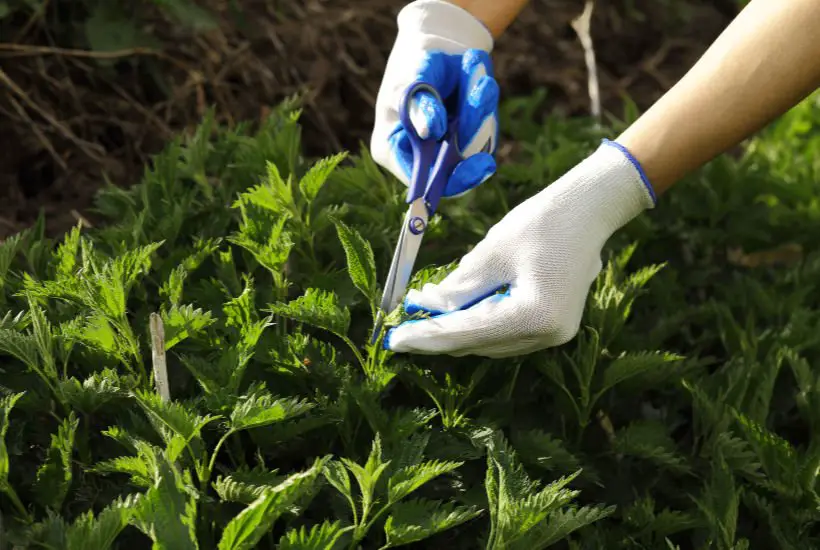
Nettles
Wild nettles, also known as stinging nettles, are a common wild edible plant found in many parts of the world, including North America, Europe, and Asia. They are typically found in damp, fertile soil in woodlands, fields, and along riverbanks.
Nettles are characterized by their serrated, heart-shaped leaves and small, greenish flowers. The entire plant, including the leaves, stems, and roots, is edible, but it is important to wear gloves when harvesting, as the plant’s stinging hairs can cause skin irritation. To harvest nettles, pick the young leaves and stems in the spring before the plant flowers.
Nettles can be used in a variety of ways, including in soups, stews, and teas. They are also high in nutrients, such as iron, calcium, and vitamins A and C, and can be used in herbal medicine to help with allergies, arthritis, and urinary tract infections.
However, it is important to note that nettles can interfere with certain medications, such as blood thinners, and can cause stomach upset in some individuals. It is also important to cook nettles thoroughly before eating, as the heat will neutralize the stinging hairs.
Wild Cherries
Wild cherries are a type of fruit that grow on various species of cherry trees found throughout North America, Europe, and Asia. They are typically found in woodlands, hedgerows, and along roadsides.
Wild cherries can be identified by their small, round fruit, which can range in color from red to purple to black, depending on the species. The fruit is typically sweet or tart, depending on the species, and is often used in cooking to make jams, jellies, pies, and other desserts.
The entire cherry tree, including the leaves, bark, and fruit, has also been used in traditional medicine to treat a variety of ailments, such as coughs, colds, and fever. To harvest wild cherries, pick the fruit when it is fully ripe, usually in late summer or early fall.
When using wild cherries in cooking, it is important to remove the pits, as they contain small amounts of cyanide. It is also important to note that some species of wild cherries, such as the chokecherry, contain high levels of cyanide and should not be consumed in large quantities.
Additionally, individuals with certain medical conditions, such as kidney disease, should avoid consuming large amounts of cherries due to their high potassium content.
Brooklime
Brooklime, also known as Veronica beccabunga, is a wild edible plant that is native to Europe, temperate Asia, and North Africa. It is typically found in freshwater wetlands, such as ditches, ponds, and riverbanks.
Brooklime is a small, creeping plant with fleshy leaves and small blue or purple flowers. The leaves and stems of the plant are edible and have a slightly bitter taste. They can be eaten raw in salads or cooked in soups and stews. Brooklime has also been used in traditional medicine to help with digestive issues, such as constipation and diarrhea.
To harvest brooklime, pick the young leaves and stems when they are tender and avoid picking plants that are growing in polluted areas. It is important to note that brooklime, like other members of the Veronica genus, contains a small amount of a toxic alkaloid called protoanemonin.
However, this toxin is usually only present in small amounts and is destroyed by cooking. Additionally, individuals with a history of kidney stones should avoid consuming large amounts of brooklime due to its high oxalate content.
Borage
Borage is a plant that belongs to the Boraginaceae family and is native to the Mediterranean region, but is now naturalized in many parts of the world. It is typically found in sunny areas, such as fields, gardens, and along roadsides. Borage is a herbaceous plant that can grow up to 2 feet tall and has hairy leaves and stems with star-shaped blue or purple flowers.
The leaves, stems, and flowers of the plant are edible and have a slightly cucumber-like flavor. They can be used in salads, soups, and stews, or as a garnish. Borage has also been used in traditional medicine to help with respiratory issues, such as coughs and bronchitis, and to reduce inflammation.
To harvest borage, pick the young leaves and flowers when they are tender, and avoid picking plants that are growing in polluted areas. It is important to note that borage contains small amounts of pyrrolizidine alkaloids, which can be toxic in large quantities.
However, the levels of these alkaloids in borage are generally too low to cause harm. Additionally, individuals with liver or kidney disease should avoid consuming borage.
Other plants that are in season in August
Wood Sorrel, Plum, Blackberries, Blueberries, Cauliflower Fungus, Carragheen, Chanterelle Mushrooms, Chickweed, Fat Hen, Field Mushrooms, Gorse Flowers, Elderberries, Crab Apples, Apples, Hazelnuts, Sheep Sorrel, Mint, Dandelion, Sea Buckthorn, Primrose, Borage, Black Mustard, Brooklime, Gooseberry, Mallow, Raspberries & Leaves, Wild Cherries, Damsons, Rosemary, Rosehips, Nettles, White Dead Nettle, Mulberries, Parasol Mushroom, Rowan Berries (European or American Mountain Ash).
foraging for wild food by month
Stay in touch
Hope this post inspires you and of course, I’d love to know what you think! Let me know in the comments below or find me on Instagram, Facebook or Twitter and add the hashtag #practicalfrugality so that I can see your post.
Or why not subscribe to my weekly newsletter with frugal living tips and recipes straight to your mailbox.
Magdalena
This blog post was originally written on 1.8.2020 and last updated on 24.7.2022
PIN TO KEEP FOR LATER


Leave a Reply